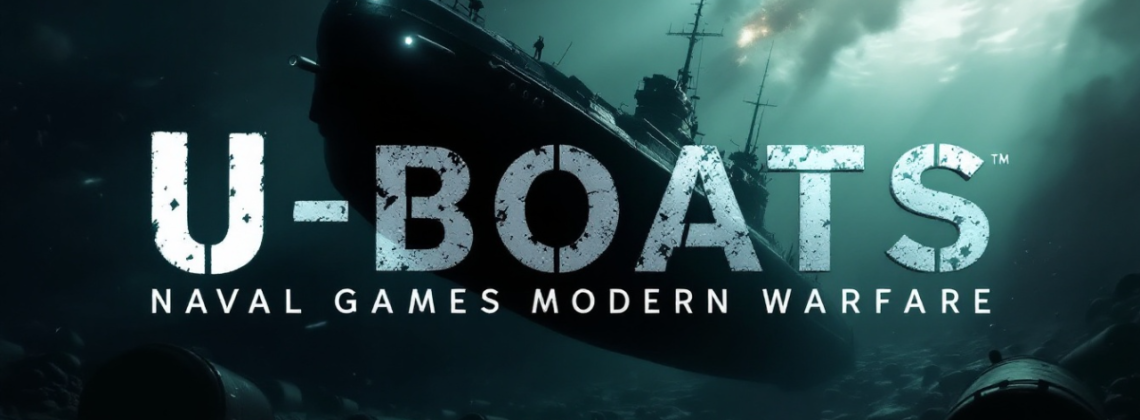
The year was 1914, and the world was engulfed in the chaos of World War I. Beneath the waves, a new and terrifying weapon emerged, forever altering the landscape of naval combat: the German U-Boat. These stealthy submarines introduced a new dimension to warfare, one of silent, unseen terror. But how did these underwater predators come to redefine naval strategy, and what legacy did they leave behind? Let’s dive into the fascinating story of the U-Boat campaign and its lasting impact on modern warfare.
The Birth of a New Weapon: Germany’s Vision for U-Boats
Before World War I, submarines were considered a novel yet untested concept. Many naval strategists underestimated their potential, dismissing them as unreliable and limited in scope. However, Germany’s Kaiserliche Marine saw an opportunity. They envisioned U-Boats as a means to challenge the dominance of the British Royal Navy, which commanded the world’s oceans with an iron grip.
Early U-Boats were modest in size and capability. Powered by diesel engines on the surface and electric motors underwater, they were vulnerable when surfacing to recharge their batteries. Despite these limitations, their stealth and offensive potential were undeniable, setting the stage for a deadly new era of naval warfare.
Early Triumphs and the Rise of Underwater Terror
The U-Boats began their mission primarily as scouts, gathering intelligence for the German fleet. However, their offensive potential was soon realized. On September 5, 1914, U-21 achieved the first major U-Boat victory by sinking the British cruiser HMS Pathfinder. This success sent shockwaves through Allied navies, proving the devastating power of these underwater vessels.
Emboldened by early victories, Germany unleashed its U-Boats on Allied shipping. In the confined waters of the North Sea and the English Channel, U-Boats wreaked havoc, targeting merchant ships carrying vital supplies to Britain. Their effectiveness disrupted Allied supply lines, raised insurance costs, and caused shortages of essential goods, striking fear into the hearts of sailors and civilians alike.
Tragedy at Sea: The Sinking of the RMS Lusitania
The U-Boat campaign reached a moral and political flashpoint on May 7, 1915, with the sinking of the RMS Lusitania. This British ocean liner, en route from New York to Liverpool, was torpedoed off the coast of Ireland, sinking in just 18 minutes and claiming 1,198 lives, including 128 Americans.
The incident sparked global outrage, with Germany accused of barbaric tactics. Though Germany argued the Lusitania was carrying war materials, the loss of civilian lives, particularly American passengers, was a public relations disaster. The tragedy pushed the United States closer to joining the war on the side of the Allies and led to a temporary scaling back of Germany’s unrestricted submarine warfare campaign. It remains a stark reminder of the human cost and ethical dilemmas of modern warfare.
The Allies Strike Back: Countering the U-Boat Threat
Initially unprepared for the U-Boat menace, the Allies eventually developed effective countermeasures. The convoy system, grouping merchant ships together under the protection of warships, proved to be a game-changer. While assembling and managing convoys posed logistical challenges, the strategy significantly reduced losses at sea.
In response, U-Boats adapted by employing “wolf pack” tactics, coordinating attacks by multiple submarines on a single convoy. This cat-and-mouse game escalated the intensity of the naval conflict, turning the Battle of the Atlantic into a relentless struggle for survival.
The Battle of the Atlantic: A War Within a War
Spanning the entirety of World War I, the Battle of the Atlantic was a brutal and unforgiving campaign. Germany sought to starve Britain into submission by targeting its supply lines, while the Allies fought to keep these lifelines open. Both sides suffered heavy losses, U-Boats to enemy action and harsh sea conditions, and Allied merchant vessels to relentless submarine attacks.
This prolonged conflict drove innovation on both sides. The Allies introduced technologies such as sonar, depth charges, and long-range patrol aircraft, while German engineers developed larger, more advanced U-Boats with greater range and firepower. The battle showcased the importance of adaptation and technological advancement in modern warfare.
Life Aboard a U-Boat: Courage Under Pressure
Serving aboard a U-Boat was a test of endurance and resilience. Crewmembers endured cramped, humid conditions and the constant threat of enemy attacks. Death was an ever-present shadow, yet camaraderie and shared purpose fostered a sense of unity among the crew.
Their stories are ones of courage and sacrifice, offering a glimpse into the human side of this underwater conflict. These sailors faced unimaginable challenges, operating under extreme pressure as they played their part in a deadly game of survival.
The U-Boat Legacy: Lessons for the Future
Although Germany ultimately lost World War I, the U-Boat campaign left an indelible mark on naval warfare. U-Boats proved to be a disruptive force, challenging traditional notions of naval power and highlighting the strategic importance of supply lines in modern conflicts.
The lessons learned from the U-Boat war shaped naval strategy and technology for decades. Anti-submarine warfare, convoy tactics, and the protection of logistics became central to military planning, demonstrating the far-reaching impact of this revolutionary weapon.
The Enduring Significance of the U-Boat Campaign
The U-Boat campaign of World War I was a pivotal chapter in military history, marking the emergence of submarines as a major weapon of war. It introduced ethical complexities surrounding unrestricted submarine warfare and underscored the devastating human cost of conflict.
With its tales of daring raids, technological innovation, and human drama, the U-Boat campaign continues to fascinate and educate us a century later. It serves as a reminder of both the horrors and the ingenuity of war, leaving a legacy that extends far beyond the battlefields of the Great War.
If you’re captivated by stories of innovation and resilience in history, don’t forget to explore more of our fascinating content.
